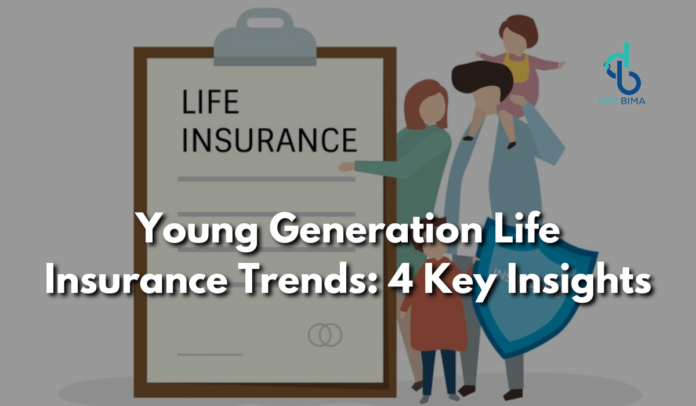The landscape of life insurance is undergoing a seismic shift, particularly in how it appeals to and serves the young generation. This demographic, often characterized by millennials and Gen Z, is not only tech-savvy but also exhibits distinct values and expectations from financial products compared to previous generations.
As they navigate through the early stages of their careers, start families, and consider their long-term financial security, life insurance in India emerges as a crucial component of their financial planning.
However, the traditional life insurance model does not resonate with them. This calls for a reimagined approach, leveraging technology, personalization, and flexibility to meet their unique needs.
1. Digital Integration and Accessibility
The young generation lives online. From shopping to banking, they prefer services that are accessible, fast, and seamlessly integrated into their digital lives. Life insurance companies are responding by adopting advanced technologies to overhaul their customer experience.
Artificial intelligence (AI) and machine learning (ML) are being used to streamline the application process, offering instant quotes and policy approval without the need for lengthy medical examinations or paperwork.
For example, Digibima, an Insurance Aggregator in India, utilizes technology to compare various life insurance policies, helping young consumers make informed decisions quickly and efficiently.
Blockchain technology is another frontier, enhancing transparency and trust in insurance transactions. It ensures the integrity of policy documents and claims, reducing fraud and speeding up claim settlements.
These digital advancements are not just about efficiency; they’re about aligning with the young generation’s expectations for immediacy and transparency.
2. Customization and Flexibility
One size does not fit all, especially when it comes to the young generation. They crave products that can be tailored to their changing lifestyles, needs, and financial goals.
Life insurance providers are taking note by offering customizable plans that can be adjusted over time. For instance, policies now come with the option to increase coverage during significant life events, such as marriage or the birth of a child, without undergoing further medical scrutiny.
Moreover, the advent of ‘micro-insurance’ policies offers coverage for specific, short-term needs at a lower cost, appealing to young adults who might not yet see the value in a traditional, long-term life insurance policy.
This flexibility in coverage options ensures that life insurance is not seen as a static, one-time decision but a dynamic part of one’s evolving financial portfolio.
3. Lifestyle-Based Pricing
Today’s young adults are more health-conscious and have access to technology that can monitor their health in real-time. Life insurance companies are leveraging this trend through lifestyle-based pricing models.
By using data from fitness trackers and health apps, insurers can offer lower premiums to individuals who maintain a healthy lifestyle, effectively rewarding them for their health-conscious decisions.
This practice encourages a better lifestyle among policyholders while also offering more personalized pricing. It represents a shift from the traditional ‘one-size-fits-all’ approach to premiums, making life insurance more accessible and appealing to the young generation.
4. Focus on Financial Education and Wellness
The young generation values knowledge and is keen on making informed financial decisions. However, the complexity of life insurance products can be daunting.
Recognizing this, insurers are increasingly focusing on financial education, offering resources and tools to help young adults understand the importance of life insurance in India in their financial planning.
Through blogs, webinars, and interactive tools, insurers demystify life insurance, covering topics from basic policy information to advanced financial planning strategies.
This trend towards education and empowerment aligns with the young generation’s desire for transparency and informed decision-making, fostering a deeper understanding and appreciation of life insurance.
Conclusion
Understanding the nuances of various policies, how life insurance fits into a broader financial plan, and the benefits of starting life insurance early can significantly impact financial wellness and security.
Insurers also provide educational resources and tools to help demystify the process, making life insurance more approachable and easily understood. This focus on education ensures that young adults are not just passive buyers of insurance products but informed, engaged participants in their financial futures.
As life insurance evolves to meet the demands of the young generation, it’s clear that the industry is moving towards more personalized, flexible, and technologically integrated solutions.
This shift not only caters to the unique preferences of millennials and Gen Z but also paves the way for a future where life insurance in India is seamlessly woven into the fabric of everyday financial planning.
The emphasis on digital integration, customization, lifestyle-based pricing, and financial education highlights a broader trend towards consumer-centric approaches in financial services.
As young adults become increasingly savvy and discerning consumers, the life insurance industry’s willingness to adapt and innovate will be key to engaging this important demographic.
As this generation continues to navigate their financial journey, life insurance will undoubtedly play a pivotal role in providing peace of mind and financial security for themselves and their loved ones.
The industry’s ability to adapt and respond to these trends will not only benefit young consumers but also ensure the long-term relevance and growth of life insurance as a whole.
FAQ Section
Q1. What is life insurance, and why is it important for young adults?
Life insurance is a contract between an individual and an insurance company, where the insurer pays a designated beneficiary a sum of money in exchange for premiums upon the policyholder’s death. For young adults, it’s important as it provides financial security to their loved ones, covers debts, and can be a part of long-term financial planning.
Q2. How can technology make buying life insurance easier for the young generation?
Technology streamlines the buying process through online applications, instant quotes, and the use of AI for personalized policy recommendations. It makes life insurance more accessible and tailored to the digital lifestyle of the young generation.
Q3. Can lifestyle choices affect life insurance premiums?
Yes, many insurers now use data from fitness trackers and health apps to offer lower premiums to individuals who lead a healthy lifestyle. This lifestyle-based pricing rewards healthy choices, making life insurance more personalized and affordable.
Q4. How does customization in life insurance policies benefit young adults?
Customization allows policies to be tailored to individual needs and lifestyles, offering flexibility as those needs change over time. It ensures that life insurance remains relevant and valuable throughout different stages of life.
Q5. Why is financial education important in the context of life insurance for young adults?
Financial education is crucial because it empowers young adults with the knowledge to make informed decisions about their life insurance needs.


